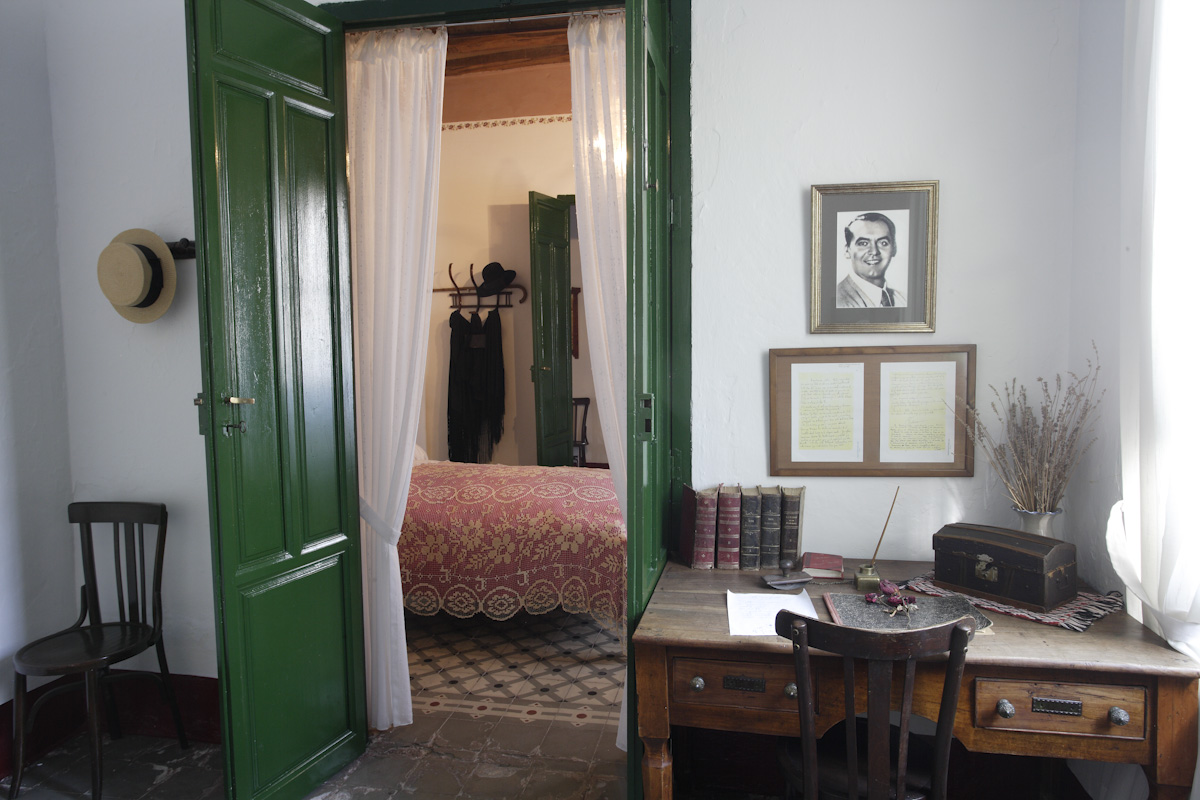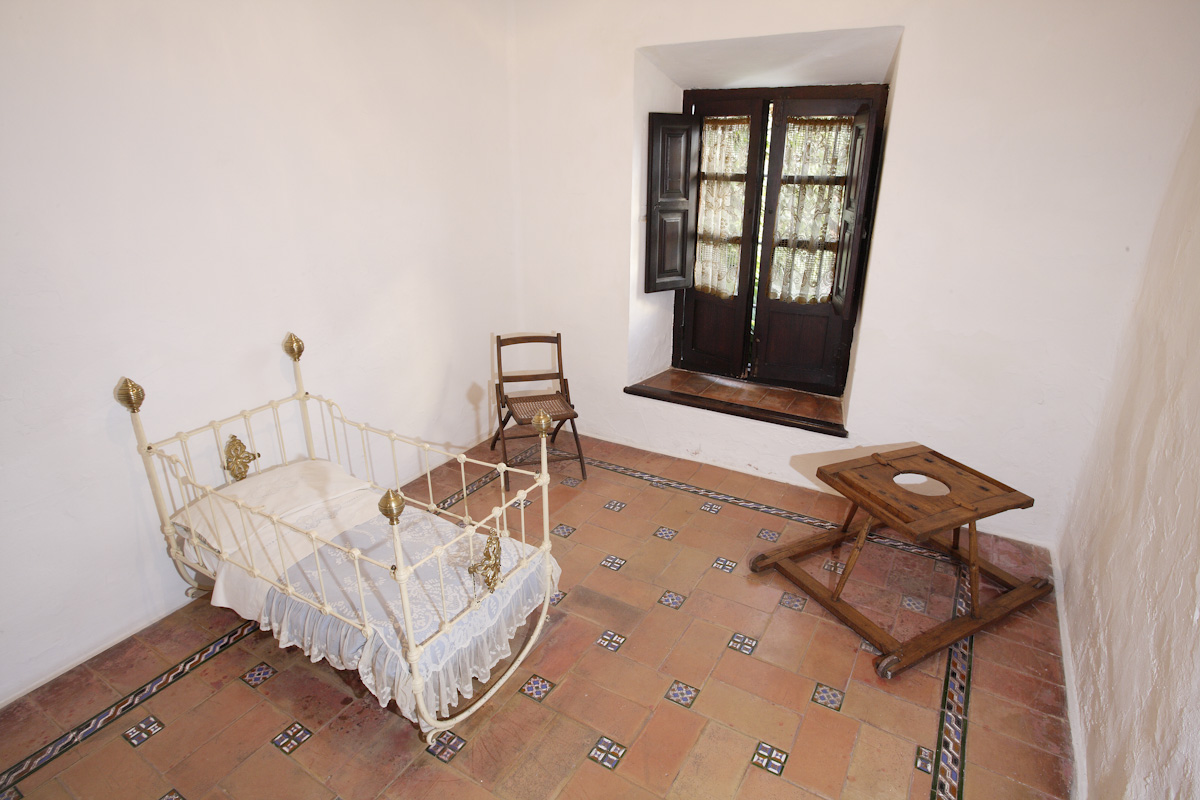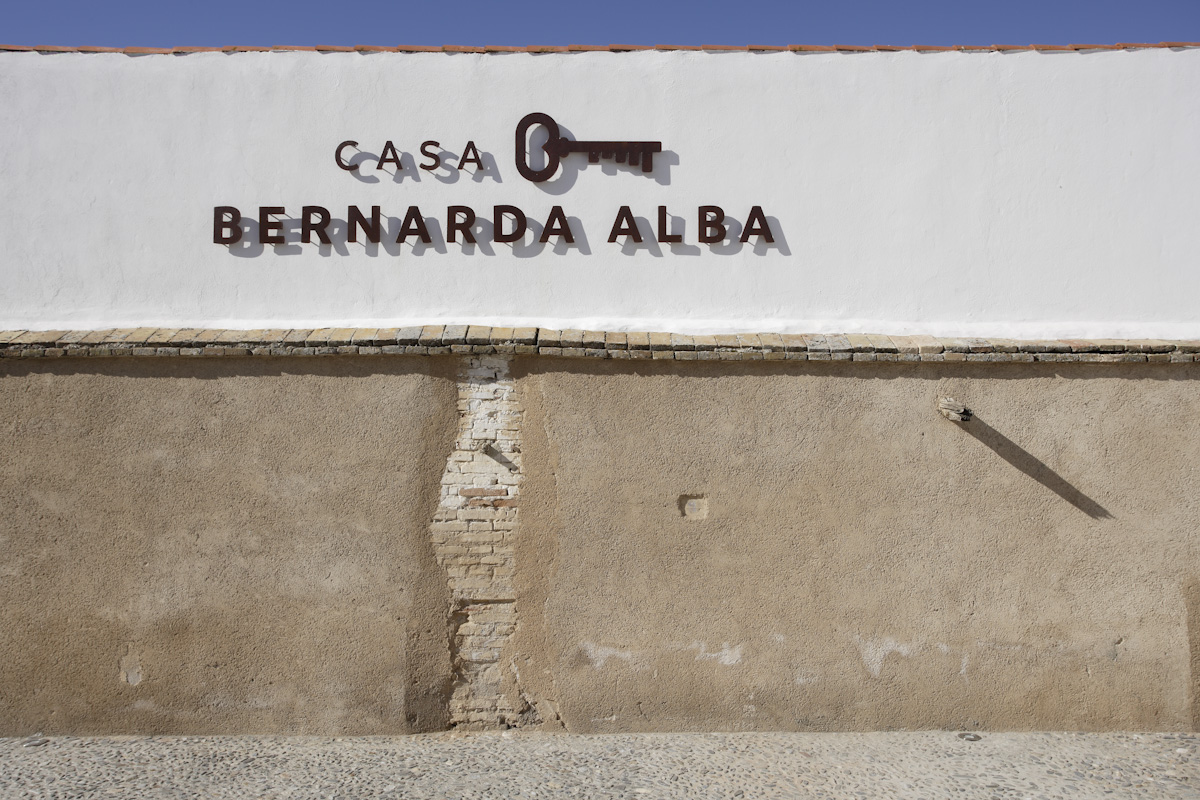The villages of Fuente Vaqueros and Valderrubio were Federico García Lorca’s first home. He lived there until he was ten years old and spent the summers of his youth there until he was 28.
This route, recommended to take by car or motorcycle, public transport or bicycle, links the house-museums where he was born and raised, and also the one that inspired one of his greatest works, ‘The House of Bernarda Alba’.
Route data
- ROUTE LENGTH:
- 4 kilometers
- ESTIMATED DURATION:
- 2 and a half hours (10 minutes of travel time)
- HOW TO DO IT:
- By car, motorcycle or bicycle Download
Places that make up the route
Although Federico was born in Fuente Vaqueros, the fundamental experiences of his childhood and adolescence came to life in Asquerosa (Disgusting), where his family moved in 1906. In this house, among poplar groves, fountains and rivers, he had his “first artistic amazement”, trained as a musician, tried his hand at literature and wrote his first poems.
In this house Federico was born in 1898 and spent his first years before moving to Valderrubio. He soon entered school and soon also discovered his love for reading, theater and music. As an adult he would recall his childhood: “My childhood is learning letters and music with my mother, being a rich boy in the village, bossy”.
In this house lived Fraquista Alba and Lorca was inspired by it for his famous tragedy ‘La casa de Bernarda Alba’, premiered in 1945 in Buenos Aires by Margarita Xirgu’s company. It is located in Real de Valderrubio Street and over it has weighed the taboo of fiction and truth for decades. The property has been a museum since 2018.
It is difficult to think of Federico García Lorca and his work without associating them with the countryside, with the land and, in particular, with the villages (Fuente Vaqueros, Valderrubio, Pinos Puente, Romilla and all the villages of the Soto de Roma) of the then fertile Vega de Granada. There he was born, wrote his prose and verses in his youth, became socially aware; there he also matured and, as an adult, living in Madrid, in the Vega he sought refuge to write, to overcome personal crises or to escape from the hostile environment that led to the Civil War and his own murder. The poet who described the megalopolis New York with a merciless scalpel never forgot his origin: “Shepherds, fields, sky, solitude. Simplicity, in short. From that contrast was born the heartbreak that still stuns and thrills the readers of Poet in New York.
The author’s words are the result of this contrast.
This route runs through the places of the Vega de Granada where Federico had his first “reverie of remoteness”, points out the houses where he lived and the streets, the people, the customs, the poetry where his ideas nested as a child then “melted in the crucible of puberty”. Vega was the childhood in Fuente Vaqueros; Vega was the land and the springs where his first poems sprouted; the walks along the banks of the Cubillas and Genil; the meditations before the tiny spring of La Teja. The Vega was also the center of family summers after the move to Granada or the move to Madrid. And the Vega was, long before it was mistreated and disfigured by ferocious urbanism, the Huerta de San Vicente (San Vicente Farmhouse) where he worked, between 1926 and 1936, on the best of his poems and plays. And, finally, the Vega was the neighboring Huerta del Tamarit farmhouse, whose name inspired one of his last books. The Vega, or what remains of it, despite the passage of time, continues to be Federico’s most faithful witness, the space where his work is best understood or recognized.
This route is a minimal note that aspires to be the thread that leads the visitor through Lorca’s spaces, exposes him to his lyrical influence and encourages him to read and reread an inexhaustible work fused with nature. “The earth, the countryside, have done great things in my life,” he declared in 1934, “The bugs of the earth, the animals, the peasants, have suggestions that reach very few. I capture them now with the same spirit of my childhood years.”


